Authors Biography
Chapter 1

Isabela Ferrão Apolinário was born in Brasília, Brazil. She is currently studying Electronics Engineering in the Federal University of Rio de Janeiro (UFRJ) and will soon join an M.Sc. course in the same university.
Since 2010 she has been a member of the Audio Processing Group (GPA) from the Signal Processing Laboratory (LPS) and has been studying audio processing. She has worked as an undergraduate teaching assistance in Calculus II and Digital Signal Processing.
She is currently a student member of the IEEE Circuits and Systems Society. Her main interest is in digital audio signal processing, more specifically in Psychoacoustics and Audio 3D.
Chapter 2
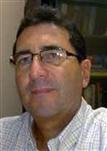
José Antonio Apolinário Junior graduated from the Military Academy of Agulhas Negras (AMAN), Brazil, in 1981 and received the B.Sc. degree from the Military Institute of Engineering (IME), Brazil, in 1988, the M.Sc. degree from the University of Brasília (UnB), Brazil, in 1993, and the D.Sc. degree from the Federal University of Rio de Janeiro (COPPE/UFRJ), Rio de Janeiro, Brazil, in 1998, all in electrical engineering. He is currently an Adjoint Professor with the Department of Electrical Engineering, IME, where he has already served as the Head of Department and as the Vice-Rector for Study and Research. He was a Visiting Professor at the em Escuela Politécnica del Ejército (ESPE), Quito, Ecuador, from 1999 to 2000 and a Visiting Researcher and twice a Visiting Professor at Helsinki University of Technology (HUT), Finland, in 1997, 2004, and 2006, respectively. His research interests comprise many aspects of linear and nonlinear digital signal processing, including adaptive filtering, speech, and array processing. He has organized and has been the first Chair of the Rio de Janeiro Chapter of the IEEE Communications Society. He has recently edited the book “QRDRLS Adaptive Filtering” (Springer, 2009) and served as the Finance Chair of IEEE ISCAS 2011 (Rio de Janeiro, Brazil, May 2011). He is a senior member of the IEEE.

Carla Liberal Pagliari received the Ph.D. degree in electronic systems engineering from the University of Essex, UK, in 2000. Since 1993 she has been with the Department of Electrical Engineering at the Military Institute of Engineering (IME), Rio de Janeiro, Brazil. She took part in the team that worked toward the development of the Brazilian Digital Television System. Her research interests include image processing, digital television, image and video coding, stereoscopic and multiview systems, and computer vision. She is a senior member of the IEEE and served as the Local Arrangements Chair of IEEE ISCAS 2011 (Rio de Janeiro, Brazil, May 2011). She is currently an Associate Editor of the journal Multidimensional Systems and Signal Processing.
Chapter 3
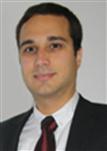
Leonardo Gomes Baltar received his B.Sc. and M.Sc. degrees in Electrical Engineering from the Federal University of Rio de Janeiro (UFRJ), Brazil, in 2004 and 2006, respectively. Since 2006, he is with the Chair of Circuit Theory and Signal Processing at the Technical University of Munich (TUM), Germany, as a research and teaching assistant pursuing a Ph.D. degree. His activities are mainly in the area of digital signal processing techniques applied to wired and wireless communications systems including multirate systems, filter banks, block transforms, digital filters design, and efficient processing structures. He has been involved in the European FP7 project PHYDYAS and in projects with industrial partners.

Josef A. Nossek received his Dipl.-Ing. and Dr. techn. degrees from the Technical University of Vienna, Austria, in 1974 and 1980, respectively. He was for 15 years with Siemens AG, Munich, in the field of communications, including the position of Head of Radio Systems Design for digital communications. In 1989 he joined the Technical University of Munich (TUM), Germany, where he is full Professor and Head of the Chair for Circuit Theory and Signal Processing. He is a Fellow of IEEE since 1993 for his contributions to the design of discrete-time networks and technical leadership in the development of radio communication systems. He was the Editor-in-Chief of the IEEE Transactions on Circuits and Systems (1993–1995). He was President-Elect, President, and Past President of the IEEE Circuits and Systems Society (2001/02/03). In 1998 he received the Innovations Award of the Vodafone Foundation for excellent research in mobile communications. In 2008 he received the Education Award of the IEEE Circuits and Systems Society. In 2011 he received the IEEE Guillemin-Cauer Best Paper Award. Since 2009 he is member of acatech (National Academy of Science and Engineering). He is author or co-author of numerous publications and has given a number of invited plenary lectures. He was the President of VDE (2007–2008), the German Association of Electrical, Electronics and Information Engineering, and Vice-President of VDE (2009–2010).
Chapter 4

Luiz W. P. Biscainho was born in Rio de Janeiro, Brazil, in 1962. He received the Electronics Engineering degree (magna cum laude) from the EE (now Poli) at Universidade Federal do Rio de Janeiro (UFRJ), Brazil, in 1985, and the M.Sc. and D.Sc. degrees in Electrical Engineering from the COPPE at UFRJ in 1990 and 2000, respectively. Having worked in the telecommunication industry between 1985 and 1993, Dr. Biscainho is now Associate Professor at the Department of Electronics and Computer Engineering (DEL) of Poli and the Electrical Engineering Program (PEE) of COPPE (serving as Academic Coordinator in 2010), at UFRJ. His research area is digital signal processing, particularly audio processing and adaptive systems. He is currently a member of the IEEE (Institute of Electrical and Electronics Engineers), the AES (Audio Engineering Society), the SBrT (Brazilian Telecommunications Society), and the SBC (Brazilian Computer Society).
Chapter 5

Håkan Johansson received the Master of Science degree in computer science and the Licentiate, Doctoral, and Docent degrees in Electronics Systems from Linkoping University, Sweden, in 1995, 1997, 1998, and 2001, respectively. During 1998 and 1999 he held a postdoctoral position at Signal Processing Laboratory, Tampere University of Technology, Finland. He is currently Professor in Electronics Systems at the Department of Electrical Engineering of Linkoping University. His research encompasses design and implementation of efficient and flexible signal processing (SP) systems, mainly for communication applications. During the past decade, he has developed many different SP algorithms for various purposes, including filtering, sampling rate conversion, signal reconstruction, and parameter estimation. He has developed new estimation and compensation algorithms for errors in analog circuits such as compensation of mismatch errors in time-interleaved analog-to-digital converters and mixers. He is one of the founders of the company Signal Processing Devices Sweden AB that sells this type of advanced signal processing. He is the author or co-author of four books and some 160 international journal and conference papers. He is the co-author of three papers that have received best paper awards and he has authored one invited paper in IEEE Transactions and four invited chapters. He has served as Associate Editor for IEEE Trans. on Circuits and Systems I and II, IEEE Trans. Signal Processing, and IEEE Signal Processing Letters, and he is currently an Area Editor of the Elsevier Digital Signal Processing journal and a member of the IEEE Int. Symp. Circuits. Syst. DSP track committee.
Chapter 6

Lars Wanhammar was born in Vansbro, Sweden, on August 19, 1944. He has received the following degrees: Teknisk magister (teknisk fysik) in 1970, civilingenjör in 1980, teknisk doktor in 1981, and docent in 1986, in electrical engineering from Linköping University, Sweden. During 1964–1970 he worked at Televerket (Royal Swedish Telephone Board), Division of Communication and during 1970–1971 as a Lecturer at the technical college in Norrköping. Since 1971 he has been working at Linköping University, Department of Electrical Engineering, Division of Applied Electronics, as Assistant, Research Assistant, and from 1982 as Associate Professor (universitetslektor) and from 1997 as full Professor and Head of the Division of Electronics Systems, at the Department of Electrical Engineering, Linköping University, Sweden. From 2011 he is currently Professor Emeritus.
In addition, from 1995 to 2004 he worked as Adjunct Professor at the Norwegian Institute of Technology (NTNU) at the departments of Physical Electronics and Telecommunications.
His research interests are primary theory and design of digital signal processing and telecommunication systems, particularly analog and digital filters, and discrete transforms as well as computational properties of DSP algorithms, bit-serial, digit-serial and distributed arithmetic, CAD tools, and globally asynchronous locally synchronous techniques for ULSI.
He is the author or co-author of five books in analog and digital filters, one in parallel processing in industrial real-time applications, and one in DSP integrated circuits.
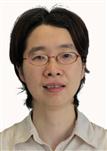
Ya Jun Yu received the B.Sc. and M.Eng. degrees in biomedical engineering from Zhejiang University, Hangzhou, China, in 1994 and 1997, respectively, and the Ph.D. degree in electrical and computer engineering from the National University of Singapore, Singapore, in 2004.
From 1997 to 1998, she was a Teaching Assistant with Zhejiang University. She joined the Department of Electrical and Computer Engineering, National University of Singapore as a Post Master Fellow in 1998 and remained in the same department as a Research Engineer until 2004. She joined the Temasek Laboratories at Nanyang Technological University as a Research Fellow in 2004. Since 2005, she has been with the School of Electrical and Electronic Engineering, Nanyang Technological University, Singapore, where she is currently an Assistant Professor. Her research interests include digital signal processing and VLSI circuits and systems design.
He has served as an associate editor for Circuits Systems and Signal Processing and IEEE TRANSACTIONS ON CIRCUITS AND SYSTEMS II since 2009 and 2010, respectively.
Chapter 7

Fred Harris holds the Signal Processing Chair of the Communication Systems and Signal Processing Institute at San Diego State University where since 1967 he has taught courses in Digital Signal Processing and Communication Systems. He holds 20 patents on digital receiver and DSP technology and lectures throughout the world on DSP applications. He consults for organizations requiring highperformance, cost-effective DSP solutions. He is an adjunct member of the IDA-Princeton Center for Communications Research.
Fred Harris has written over 200 journal and conference papers, the most well known being his 1978 paper “On the use of Windows for Harmonic Analysis with the Discrete Fourier Transform”. He is the author of the book Multirate Signal Processing for Communication Systems and he has contributed to a number of other books on DSP applications including the “Source Coding” chapter in Bernard Sklar’s 1988 book, Digital Communications and the “Multirate FIR Filters for Interpolation and Resampling” and the “Time Domain Signal Processing with the DFT” chapters in Doug Elliot’s 1987 book Handbook of Digital Signal Processing, and “A most Efficient Digital Filter: The Two-Path Recursive All-Pass Filter” Chapter and the “Ultra Low Phase Noise DSP Oscillator” Chapter in Rick Lyon’s 2012 book Streamlining Digital Signal Processing. He is also co-author of the book Software Radio Sampling Rate Selection, Design and Synchronization.
In 1990 and 1991 he was the Technical and then the General Chair of the Asilomar Conference on Signals, Systems, and Computers and was Technical Chair of the 2003 Software Defined Radio Conference and of the 2006 Wireless Personal Multimedia Conference. He became a Fellow of the IEEE in 2003, cited for contributions of DSP to communications systems. In 2006 he received the Software Defined Radio Forum’s “Industry Achievement Award”. His paper at the 2006 SDR conference was selected for the best paper award as was his paper at the 2010 Autotestcon conference and again his paper at the 2011 Wireless Personal Mobile Communications Conference and once again the 2011 SDR conference. He is the former Editorin-Chief of the Elsevier DSP Journal.
The spelling of my name with all lower case letters is a source of distress for typists and spell checkers. A child at heart, I collect toy trains and old slide-rules.

Elettra Venosa received the “Laurea” (BS/MS) degree, summa cum laude, in Electrical Engineering in January 2007 from Seconda Università degli Studi di Napoli, Italy. From January 2007 to November 2007 she was a researcher at the Italian National Inter-University Consortium for Telecommunications. In January 2011, she received the Ph.D. in Telecommunication/DSP from Seconda Università degli Studi di Napoli. From June 2008 to September 2008 she worked as a project manager for Kiranet –ICT Research Center – to develop an advanced radio identification system for avionics, in collaboration with the Italian Center for Aerospace Research (CIRA). From April 2009 to September 2009 she worked as associate researcher at Communications and Signal Processing Laboratory (CSPL) in the Department of Electrical and Computer Engineering at Drexel University, Philadelphia, where she worked on Sparse Sampling Techniques for Software Defined Radio Receivers. From January 2011 to July 2012 she worked as principal system engineer in IQ-Analog, CA, developing algorithms for digital correction in TI-ADCs. From August 2012 to December 2013 she was associate researcher in Qualcomm, CA. Her focus was to improve the current commercial modem architectures. Currently, she is working, as a postdoctoral researcher, on Multirate Signal Processing for Software Defined Radios in the Department of Electrical Engineering at San Diego State University, San Diego, CA, USA where she also teaches graduate and undergraduate courses. She is also working as a software defined radio engineer in Space Micro, CA. She is the author of more than 40 scientific publications on SDR and of the book “Software Radio: Sampling Rate Selection Design and Synchronization”.

Xiaofei Chen received the Bachelor’s degree in Electrical Engineering in June 2006 from Xi’an University of Posts & Telecommunications, China. In December 2008, he received the Master’s degree at Electrical & Computer Engineering department, San Diego State University, USA. In March 2009, he joined the Joint Doctoral Program between San Diego State University and University of California, San Diego. His current research interests are in the area of multirate signal processing and software defined radio.
Chapter 8
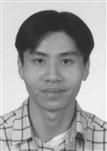
Trac D. Tran (S’94–M’98–SM’08) received the B.S. and M.S. degrees from the Massachusetts Institute of Technology, Cambridge, in 1993 and 1994, respectively, and the Ph.D. degree from the University of Wisconsin, Madison, in 1998, all in electrical engineering.
In July 1998, he joined the Department of Electrical and Computer Engineering, The Johns Hopkins University, Baltimore, MD, where he currently holds the rank of Professor. His research interests are in the field of signal processing, particularly in sparse representation, sparse recovery, sampling, multirate systems, filter banks, transforms, wavelets, and their applications in signal analysis, compression, processing, and communications. His pioneering research on integercoefficient transforms and pre-/post-filtering operators has been adopted as critical components of Microsoft Windows Media Video 9 and JPEG XR—the latest international still-image compression standard ISO/IEC 29199–2. He is currently a regular consultant for the US Army Research Laboratory, Adelphi, MD.
He was the codirector (with Prof. J. L. Prince) of the 33rd Annual Conference on Information Sciences and Systems (CISS’99), Baltimore, in March 1999. In the summer of 2002, he was an ASEE/ONR Summer Faculty Research Fellow at the Naval Air Warfare Center Weapons Division (NAWCWD), China Lake, CA. He has served as Associate Editor of the IEEE TRANSACTIONS ON SIGNAL PROCESSING as well as the IEEE TRANSACTIONS ON IMAGE PROCESSING. He was a former member of the IEEE Technical Committee on Signal Processing Theory and Methods (SPTM TC) and is a current member of the IEEE Image Video and Multidimensional Signal Processing (IVMSP) Technical Committee. He received the NSF CAREER award in 2001, the William H. Huggins Excellence in Teaching Award from The Johns Hopkins University in 2007, and the Capers and Marion McDonald Award for Excellence in Mentoring and Advising in 2009.
Chapter 9
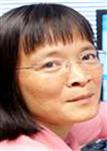
Yufang Bao has been an Assistant Professor in the Department of Mathematics and Computer Science at UNC Fayetteville State University (UNCFSU) since 2007. She is also a scholar of the Center of Defense and Homeland Security (CDHS) at UNCFSU. She received her first Ph.D. degree in probability/ statistics from Beijing Normal University (BNU), Beijing, China, and her second Ph.D. degree in Electrical Engineering from North Carolina State University (NCSU), Raleigh, NC. Her research focus was in probability/ statistics. She subsequently directed her research into the area of applying mathematics in signal/image processing and analysis. Her contributions in signal/image processing included algorithm development that bridged stochastic diffusion and multi-scale wavelet theory with scale space analysis methods for image denoising and segmentation. Between 2002 and 2007, she has worked at the VA Center, UCSF, CA and then at the University of Miami, School of Medicine, FL, both as a research scientist focusing on statistical image reconstruction in Frequency domain with MR spectroscopy imaging, and with parallel MR image reconstruction using mathematical modeling. Currently, her research interests are in applying mathematics to statistical digital signal/image processing and analysis, mathematical modeling, and their applications.
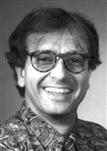
Hamid Krim ([email protected]) received his degrees in ECE from University of Washington and Northeastern University. He was a Member of Technical Staff at AT&T Bell Labs, where he has conducted research and development in the areas of telephony and digital communication systems/subsystems. Following an NSF postdoctoral fellowship at Foreign Centers of Excellence, LSS/ University of Orsay, Paris, France, he joined the Laboratory for Information and Decision Systems, Massachusetts Institute of Technology, Cambridge, MA as a Research Scientist and where he was performing and supervising research.
He is presently Professor of Electrical Engineering in the ECE Department, North Carolina State University, Raleigh, leading the Vision, Information and Statistical Signal Theories and Applications group. His research interests are in statistical signal and image analysis and mathematical modeling with a keen emphasis on applied problems in classification and recognition using geometric and topological tools.
Chapter 10
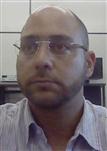
Lisandro Lovisolo was born in Neuquen, Argentina, but considers himself brazilian. He received the Electronics Engineering degree from Universidade Federal do Rio de Janeiro, in 1999, the M.Sc. degree in Electrical Engineering in 2001, and the D.Sc. degree in Electrical Engineering both from Universidade Federal do Rio de Janeiro (COPPE/UFRJ). Since 2003 he has been with the Department of Electronics and Communications Engineering (the undergraduate department), UERJ. He has also been with the Postgraduate in Electronics Program, since 2008. His research interests lie in the fields of digital signal and image processing and communications.
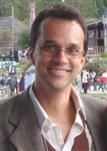
Eduardo A. B. da Silva was born in Rio de Janeiro, Brazil. He received the Electronics Engineering degree from Instituto Militar de Engenharia (IME), Brazil, in 1984, the M.Sc. degree in Electrical Engineering from Universidade Federal do Rio de Janeiro (COPPE/UFRJ) in 1990, and the Ph.D. degree in Electronics from the University of Essex, England, in 1995. In 1987 and 1988 he was with the Department of Electrical Engineering at Instituto Militar de Engenharia, Rio de Janeiro, Brazil. Since 1989 he has been with the Department of Electronics Engineering (the undergraduate department), UFRJ. He has also been with the Department of Electrical Engineering (the graduate studies department), COPPE/UFRJ, since 1996. His research interests lie in the fields of digital signal and image processing, especially signal compression, digital television, wavelet transforms, mathematical morphology, and applications to telecommunications.
Chapter 11
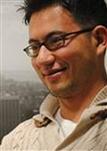
Suleyman Serdar Kozat received the B.S. degree with full scholarship and high honors from Bilkent University, Turkey. He received the M.S. and Ph.D. degrees in Electrical and Computer Engineering from University of Illinois at Urbana Champaign, Urbana, IL, in 2001 and 2004, respectively.
After graduation, he joined IBM Research, T.J. Watson Research Center, Yorktown, NY as a Research Staff Member in Pervasive Speech Technologies Group, where he focused on problems related to statistical signal processing and machine learning. While doing his Ph.D., he was also working as a Research Associate at Microsoft Research, Redmond, WA, in Cryptography and Anti-Piracy Group. He holds several patent applications for his works performed in IBM Research and Microsoft Research. Currently, he is an Assistant Professor at the electrical and electronics engineering department, Koc University, Turkey. He coauthored more than 50 papers in refereed high impact journals and conference proceedings and has several patent applications. Overall, his research interests include intelligent systems, adaptive filtering for smart data analytics, online learning, and machine learning algorithms for signal processing.
He has been serving as an Associate Editor for the IEEE Transactions on Signal Processing and he is a Senior Member of the IEEE. He has been awarded IBM Faculty Award by IBM Research in 2011, Outstanding Faculty Award by Koc University in 2011, Outstanding Young Researcher Award by the Turkish National Academy of Sciences in 2010, ODTU Prof. Dr. Mustafa N. Parlar Research Encouragement Award in 2011 and holds Career Award by the Scientific Research Council of Turkey, 2009. He has won several scholarships and medals in international and national science and math competitions.

Andrew C. Singer received the S.B., S.M., and Ph.D. degrees, all in Electrical Engineering and Computer Science, from the Massachusetts Institute of Technology. Since 1998, he has been on the faculty of the Department of Electrical and Computer Engineering at the University of Illinois at Urbana-Champaign, where he is currently a Professor in the ECE department and the Coordinated Science Laboratory. During the academic year 1996, he was a Postdoctoral Research Affiliate in the Research Laboratory of Electronics at MIT. From 1996 to 1998, he was a Research Scientist at Sanders, A Lockheed Martin Company in Manchester, New Hampshire, where he designed algorithms, architectures, and systems for a variety of DOD applications. His research interests include signal processing and communication systems. He was a Hughes Aircraft Masters Fellow and was the recipient of the Harold L. Hazen Memorial Award for excellence in teaching in 1991. In 2000, he received the National Science Foundation CAREER Award, in 2001 he received the Xerox Faculty Research Award, and in 2002 he was named a Willett Faculty Scholar. He has served as an Associate Editor for the IEEE Transactions on Signal Processing and is a member of the MIT Educational Council, and of Eta Kappa Nu and Tau Beta Pi. He is a Fellow of the IEEE.
In 2005, he was appointed as the Director of the Technology Entrepreneur Center (TEC) in the College of Engineering. He also co-founded Intersymbol Communications, Inc., a venture-funded fabless semiconductor IC company, based in Champaign Illinois. A developer of signal processing enhanced chips for ultra-high speed optical communications systems, Intersymbol was acquired by Finisar Corporation (NASD:FNSR) in 2007. He serves on the board of directors of a number of technology companies and as an expert witness for electronics, communications, and circuitrelated technologies.
Chapter 12
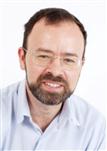
Vítor H. Nascimento was born in São Paulo, Brazil. He obtained the B.S. and M.S. degrees in Electrical Engineering from the University of São Paulo in 1989 and 1992, respectively, and the Ph.D. degree from the University of California, Los Angeles, in 1999. From 1990 to 1994 he was a Lecturer at the University of São Paulo, and in 1999 he joined the faculty at the same school, where he is now an Associate Professor. One of his papers received the 2002 IEEE SPS Best Paper Award. He served as an Associate Editor for the IEEE Signal Processing Letters from 2003 to 2005, for the IEEE Transactions on Signal Processing from 2005 to 2008, and for the EURASIP Journal on Advances in Signal Processing from 2006 to 2009, and was a member of the IEEE-SPS Signal Processing Theory and Methods Technical Committee from 2007 to 2012. Since 2010 he is the chair of the São Paulo SPS Chapter. His research interests include signal processing theory and applications, robust and nonlinear estimation, and applied linear algebra.
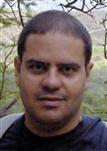
Magno T. M. Silva was born in São Sebastião do Paraíso, Brazil. He received the B.S., M.S., and Ph.D. degrees, all in electrical engineering, from Escola Politécnica, University of São Paulo, São Paulo, Brazil, in 1999, 2001, and 2005, respectively. From February 2005 to July 2006, he was an Assistant Professor at Mackenzie Presbyterian University, São Paulo, Brazil. Since August 2006, he has been with the Department of Electronic Systems Engineering at Escola Politécnica, University of São Paulo, where he is currently an Assistant Professor. From January to July 2012, he worked as a Postdoctoral Researcher at Universidad Carlos III de Madrid, Leganés, Spain. His research interests include linear and non-linear adaptive filtering.
Chapter 14
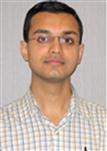
Ambuj Tewari is with the Department of Statistics, University of Michigan, Ann Arbor. He has served on senior program committees of the conferences on Algorithmic Learning Theory (ALT), Conference on Learning Theory (COLT), and Neural Information Processing Systems (NIPS). His work has received both the student paper award (2005) and the best paper award (2011) at COLT. He received his M.A. in Statistics (2005) and Ph.D. in Computer Science (2007) from the University of California at Berkeley where his advisor was Peter Bartlett. He was a research Assistant Professor in Toyota Technological Institute at Chicago (2008–2010), an Assistant Professor (part-time) in the Department of Computer Science, University of Chicago (2008–2010), and a postdoctoral fellow in the Institute for Computational Engineering and Sciences, University of Texas at Austin (2010–2012). He has also been a Visiting Researcher at Microsoft Research, Redmond.

Peter L. Bartlett is with the Division of Computer Science and Department of Statistics, University of California at Berkeley, and with the School of Mathematical Sciences, Queensland University of Technology. He is the coauthor of the book “Learning in Neural Networks: Theoretical Foundations.” He has served as Associate Editor of the journals Machine Learning, Mathematics of Control Signals and Systems, the Journal of Machine Learning Research, the Journal of Artificial Intelligence Research, and the IEEE Transactions on Information Theory. He was awarded the Malcolm McIntosh Prize for Physical Scientist of the Year in Australia for his work in statistical learning theory. He was a Miller Institute Visiting Research Professor in Statistics and Computer Science at U.C. Berkeley in Fall 2001, and a Fellow, Senior Fellow, and Professor in the Research School of Information Sciences and Engineering at the Australian National University’s Institute for Advanced Studies (1993–2003).
Chapter 15
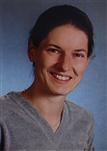
Barbara Hammer received her Ph.D. in Computer Science in 1995 and her venia legendi in Computer Science in 2003, both from the University of Osnabrueck, Germany. From 2000 to 2004, she was a leader of the junior research group “Learning with Neural Methods on Structured Data” at University of Osnabrueck before accepting an offer as professor for Theoretical Computer Science at Clausthal University of Technology, Germany, in 2004. Since 2010, she is holding a professorship for Theoretical Computer Science for Cognitive Systems at the CITEC cluster of excellence at Bielefeld University, Germany. Several research stays have taken her to Italy, UK, India, France, the Netherlands, and the USA. Her areas of expertise include hybrid systems, self-organizing maps, clustering, and recurrent networks as well as applications in bioinformatics, industrial process monitoring, or cognitive science. She is leading the task force “Data Visualization and Data Analysis” of the IEEE CIS Technical Committee on Data Mining, and the Fachgruppe Neural Networks of the GI.
Chapter 16
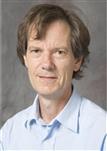
John Shawe-Taylor is a Professor at the Department of Computer Science, University College London (UK). His main research area is Statistical Learning Theory, but his contributions range from Neural Networks, to Machine Learning, to Graph Theory. He has published over 150 research papers. He obtained a Ph.D. in Mathematics at Royal Holloway, University of London in 1986. He subsequently completed an M.Sc. in the Foundations of Advanced Information Technology at Imperial College. He was promoted to Professor of Computing Science in 1996. He moved to the University of Southampton in 2003 to lead the ISIS research group. He was appointed the Director of the Center for Computational Statistics and Machine Learning at University College, London in July 2006. He has coordinated a number of Europeanwide projects investigating the theory and practice of Machine Learning, including the NeuroCOLT projects. He is currently the scientific coordinator of a Framework VI Network of Excellence in Pattern Analysis, Statistical Modeling and Computational Learning (PASCAL) involving 57 partners.
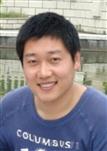
Shiliang Sun received the B.E. degree in automatic control from the Depart- ment of Automatic Control, Beijing University of Aeronautics and Astronautics in 2002, and the Ph.D. degree in pattern recognition and intelligent systems from the State Key Laboratory of Intelligent Technology and Systems, Department of Automation, Tsinghua University, Beijing, China, in 2007. In 2004, he was entitled Microsoft Fellow. Currently, he is a Professor at the Department of Computer Science and Technology and the Founding Director of the Pattern Recognition and Machine Learning Research Group, East China Normal University. From 2009 to 2010, he was a Visiting Researcher at the Department of Computer Science, University College London, working within the Center for Computational Statistics and Machine Learning. He is a member of the PASCAL (Pattern Analysis, Statistical Modelling and Computational Learning) network of excellence, and on the editorial boards of multiple international journals. His research interests include machine learning, pattern recognition, computer vision, natural language processing, and intelligent transportation systems.
Chapter 17

Konstantinos Slavakis received the M.E. and Ph.D. degrees in electrical and electronic engineering from Tokyo Institute of Technology (TokyoTech), Tokyo, Japan, in 1999 and 2002, respectively. For the period from 2004 to 2006, he was with TokyoTech as a JSPS PostDoc, and from 2006 to 2007, he was a Postdoc in the Department of Informatics and Telecommunications, University of Athens, Greece. From 2007 to 2012, he served as an Assistant Professor at the Department of Informatics and Telecommunications, University of Peloponnese, Tripolis, Greece. Currently, he is a Research Associate at the University of Minnesota, Digital Technology Center.
He serves as an Associate and Area Editor of the IEEE Transactions on Signal Processing. His research interests include applications of convex analysis and computational algebraic geometry to signal processing, machine learning, array, and multidimensional systems problems.

Pantelis Bouboulis received the M.Sc. and Ph.D. degrees in informatics and telecommunications from the National and Kapodistrian University of Athens, Greece, in 2002 and 2006, respectively. From 2007 till 2008, he served as an Assistant Professor in the Department of Informatics and Telecommunications, University of Athens. Since 2008, he teaches mathematics in Greek High Schools. His current research interests lie in the areas of machine learning, fractals, wavelets, and image processing.
Chapter 18
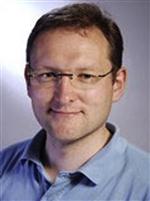
Franz Pernkopf received his M.Sc. (Dipl. Ing.) degree in Electrical Engineering at Graz University of Technology, Austria, in summer 1999. He earned a Ph.D. degree from the University of Leoben, Austria, in 2002. In 2002 he was awarded the Erwin Schrödinger Fellowship. He was a Research Associate in the Department of Electrical Engineering at the University of Washington, Seattle, from 2004 to 2006. Currently, he is Associate Professor at the Laboratory of Signal Processing and Speech Communication, Graz University of Technology, Austria. His research interests include machine learning, discriminative learning, graphical models, feature selection, finite mixture models, and image- and speech processing applications.

Robert Peharz received his M.Sc. degree in Telematics at Graz University of Technology (TUG) in 2010. He currently pursues his Ph.D. studies at the SPSC Lab, TUG. His research interests include probabilistic graphical models, sparse coding, nonnegative matrix factorization, and machine learning in general, with applications to signal processing, audio engineering, and computer vision.
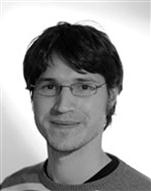
Sebastian Tschiatschek received the B.Sc. degree and M.Sc. degree in Electrical Engineering at Graz University of Technology (TUG) in 2007 and 2010, respectively. He conducted his Master thesis during a one-year stay at ETH Zürich, Switzerland. Currently, he is with the Signal Processing and Speech Communication Laboratory at TUG where he is pursuing the Ph.D. degree. His research interests include Bayesian networks, information theory in conjunction with graphical models and statistical pattern recognition.
Chapter 19

A. Taylan Cemgil (M’04) received his Ph.D. (2004) from SNN, Radboud University Nijmegen, the Netherlands. Between 2004 and 2008 he worked as a postdoctoral researcher at Amsterdam University and the Signal Processing and Communications Laboratory, University of Cambridge, UK. He is currently an Associate Professor of Computer Engineering at Bogazici University, Istanbul, Turkey. He is a member of the IEEE MLSP Technical Committee and an Associate Editor of IEEE Signal Processing Letters and Digital Signal Processing. His research interests are in Bayesian statistical methods and inference, machine learning, and audio signal processing.
Chapter 20

Dao Lam is a Ph.D. Candidate at Missouri University of Science and Technology, Rolla, MO. He received the B.S. degree from Post and Telecommunications Institute of Technology, Ho Chi Minh, Vietnam in 2003. He got his M.S. from Waseda University, Japan in 2008. His research interests are image processing, robotics, supervised and unsupervised learning, and computational intelligence.

Donald Wunsch is the Mary K. Finley Missouri Distinguished Professor at Missouri University of Science & Technology (Missouri S&T). Earlier employers were: Texas Tech University, Boeing, Rockwell International, and International Laser Systems. His education includes: Executive MBA—Washington University in St. Louis, Ph.D., Electrical Engineering—University of Washington (Seattle), M.S., Applied Mathematics (same institution), B.S., Applied Mathematics—University of New Mexico, and Jesuit Core Honors Program, Seattle University. Key research contributions are: Clustering; Adaptive Resonance and Reinforcement Learning architectures, hardware and applications; Neurofuzzy regression; Traveling Salesman Problem heuristics; Robotic Swarms; and Bioinformatics. He is an IEEE Fellow and previous INNS President, INNS Fellow and Senior Fellow 07—present, and served as IJCNN General Chair, and on several Boards, including the St. Patrick’s School Board, IEEE Neural Networks Council, International Neural Networks Society, and the University of Missouri Bioinformatics Consortium. He has produced 16 Ph.D. recipients in Computer Engineering, Electrical Engineering, and Computer Science; has attracted over $8 million in sponsored research; and has over 300 publications including nine books. His research has been cited over 6000 times.
Chapter 21

Andrzej Cichocki received the M.Sc. (with honors), Ph.D. and Dr.Sc. (Habilitation) degrees, all in electrical engineering, from Warsaw University of Technology in Poland.
Since 1972, he has been with the Institute of Theory of Electrical Engineering, Measurement and Information Systems, Faculty of Electrical Engineering at the Warsaw University of Technology, where he obtained a title of a full Professor in 1995.
He spent several years at University Erlangen-Nuerenberg in Germany, at the Chair of Applied and Theoretical Electrical Engineering directed by Professor Rolf Unbehauen, as an Alexander-von-Humboldt Research Fellow and Guest Professor.
In 1995–1997 he was a team leader of the laboratory for Artificial Brain Systems, at Frontier Research Program RIKEN (Japan), in the Brain Information Processing Group.
He is currently senior team leader and the head of the Cichocki Laboratory for Advanced Brain Signal Processing, at RIKEN Brain Science Institute in Japan.
Chapter 22
Xueyuan Zhou received his Ph.D. degree in computer science from the University of Chicago in 2011. His research interests include statistical machine learning theory and application in nonlinear high dimensional data.
Mikhail Belkin is an Associate Professor in the Department of Computer Science and Engineering at the Ohio State University. He received his Ph.D. degree in mathematics from the University of Chicago in 2003. His research interests include a range of theoretical questions concerning the computational and statistical limits of learning and mathematical foundations of learning structure from data.

Yannis Kopsinis received the B.Sc. degree from the Department of Informatics and Telecommunications, University of Athens, Greece, in 1998 and his Ph.D. degree in 2003 from the same department. From January 2004 to December 2005 he has been a research fellow with the Institute for Digital Communications, School of Engineering and Electronics, the University of Edinburgh, UK. From January 2006 to September 2009 he was a senior researcher in the same department. From January 2012 to April 2013 he was a Ramon Y Cajal Fellow in the School of Applied Physics, University of Granada, Spain. He currently holds a Marie Curie Intra-European fellowship on sparse online learning. His current research interests include adaptive signal processing, timefrequency analysis, and compressed sensing.

Konstantinos Slavakis received the M.E. and Ph.D. degrees in electrical and electronic engineering from Tokyo Institute of Technology (TokyoTech), Tokyo, Japan, in 1999 and 2002, respectively. For the period of 2004–2006, he was with TokyoTech as a JSPS PostDoc, and from 2006 to 2007, he was a Postdoc in the Department of Informatics and Telecommunications, University of Athens, Greece. From 2007 to 2012, he served as an Assistant Professor at the Department of Informatics and Telecommunications, University of Peloponnese, Tripolis, Greece. Currently, he is a Research Associate at the University of Minnesota, Digital Technology Center.
He serves as an Associate and Area Editor of the IEEE Transactions on Signal Processing. His research interests include applications of convex analysis and computational algebraic geometry to signal processing, machine learning, array, and multidimensional systems problems.
Chapter 24
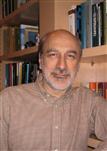
José C. Principe is currently a Distinguished Professor of Electrical and Biomedical Engineering at the University of Florida, Gainesville, USA. He is BellSouth Professor and Founder and Director of the University of Florida Computational Neuro-Engineering Laboratory (CNEL). He is an IEEE fellow and AIMBE fellow, and is the past Editor-in-Chief of the IEEE TRANSACTIONS ON BIOMEDICAL ENGINEERING, past President of the International Neural Network Society, former Secretary of the Technical Committee on Neural Networks of the IEEE Signal Processing Society, and a former member of the Scientific Board of the Food and Drug Administration. He is involved in biomedical signal processing, in particular, the electroencephalogram (EEG) and the modeling and applications of adaptive systems.
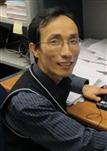
Badong Chen received his Ph.D. degree in Computer Science and Technology from Tsinghua University, Beijing, China, in 2008. He was a Postdoctoral Associate at the University of Florida Computational NeuroEngineering Laboratory (CNEL) during the period October, 2010 to September, 2012. He is currently a Professor at the Institute of Artificial Intelligence and Robotics, Xi’an Jiaotong University, Xi’an, China. His research interests are in statistical signal processing, information theoretic learning, online kernel learning, and their applications in cognition and neuroscience.

Luis G. Sanchez Giraldo was born in 1983 in Manizales, Colombia. He received the B.S. in electronics engineering and M.Eng. in industrial automation from Universidad Nacional de Colombia in 2005 and 2008, respectively, and his Ph.D. in electrical and computer engineering from University of Florida in 2012. Between 2004 and 2008, he was appointed as a research assistant at the Control and Digital Signal Processing Group (GCPDS) at Universidad Nacional de Colombia. During his Ph.D. studies he worked as a research assistant at the Computational Neuro-Engineering Laboratory (CNEL) at University of Florida. His main research interests are in machine learning and signal processing.
Chapter 25
Enes Makalic was born in 1980. He received the Bachelor of Computer Science (Honors) degree in 2002 and the Ph.D. degree in 2007, both from Monash University, Australia. His research interests include information theoretic model selection using Minimum Message Length (MML) and Minimum Description Length (MDL) theories of statistical inference. He currently holds a Postdoctoral position with The University of Melbourne, Australia.
Daniel F. Schmidt was born in 1980. He received the Bachelor of Digital Systems (Honors) degree in 2002 and the Ph.D. degree in 2008, both from Monash University, Australia. His research interests are primarily information theoretic approaches to statistical inference, model selection, and estimation. He currently holds a Postdoctoral position with The University of Melbourne, Australia.
Abd-Krim Seghouane received his Ph.D. degree from University of Paris sud (Paris XI) in 2003. His research interests are within statistical signal and image processing. He is currently a Senior Research Fellow within the department of Electrical and Electronic Engineering, The University of Melbourne.
Chapter 26

George Tzanetakis is an Associate Professor and Canada Research Chair in Computer Analysis of Audio and Music at the Department of Computer Science with cross-listed appointments in ECE and Music at the University of Victoria, Canada. In 2011 he was a visiting scientist at Google Research. He received his Ph.D. in Computer Science at Princeton University in 2002 and was a Post-Doctoral fellow at Carnegie Mellon University in 2002–2003. His research spans all stages of audio content analysis such as feature extraction, segmentation, classification with specific emphasis on music information retrieval. He is also the primary designer and developer of Marsyas an open source framework for audio processing with specific emphasis on music information retrieval applications. His pioneering work on musical genre classification received a IEEE signal processing society young author award and is frequently cited. More recently he has been exploring new interfaces for musical expression, music robotics, computational ethnomusicology, and computer-assisted music instrument tutoring. These interdisciplinary activities combine ideas from signal processing, perception, machine learning, sensors, actuators, and human-computer interaction with the connecting theme of making computers better understand music to create more effective interactions with musicians and listeners.
